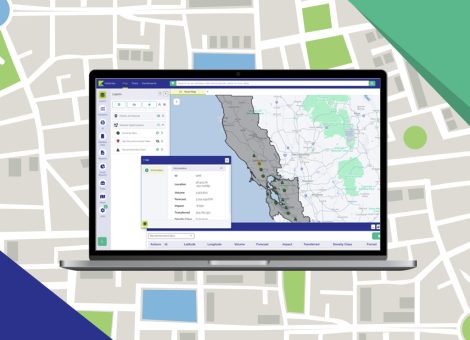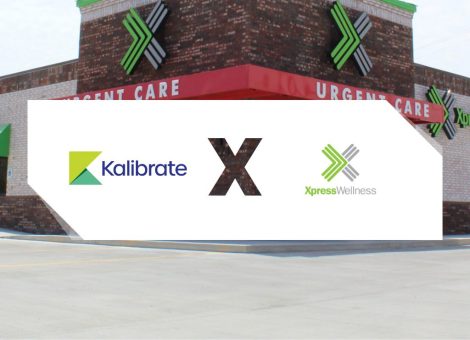Grocery sales forecasting: Keeping pace with an evolving industry
Given that grocery stores were among the first retail chains in the U.S. (coincident with the evolution of department variety store chains), it should not be surprising that the field of retail location research and market planning is rooted in the supermarket industry. William Applebaum pioneered the field of grocery sales forecasting both as a practitioner and academician – he worked with Stop & Shop (a Massachusetts supermarket chain) and Kroger among other operators, and also taught at the Harvard Business School.
The analog model
Applebaum conceived the concept of analogs, and the role they could play in identifying future supermarket locations. By quantifying the number and type of people and competitors surrounding a proposed site, in combination with examining existing sister stores with comparable characteristics, a projection of the likely performance of the proposed site could be reasonably made. While this concept may seem rudimentary today, it was a revolutionary advancement in risk mitigation associated with the site selection process in the 1940’s and 1950’s.
The gravity model
The next evolution in grocery sales forecasting was the development of the gravity model. David Huff, a Professor of Geography at the University of Texas, came up with the idea of using Newton’s Law of Gravitation as a surrogate for supermarket shopping patronage. At its most basic, the gravity model posits that consumers are attracted to supermarkets based on both their distance and their size – in other words, closer and bigger are viewed as better. Just as a physical object halfway between the Earth and the moon will fall to the Earth because its mass is greater, a consumer residing halfway between a small and a large supermarket will favor the larger of the two.
A number of firms have developed user-friendly versions of the gravity model, which typically include a factor called “Image” or “Flavor” to account for the fact that some operators are simply better than others. As an example, a Publix store in Florida across the street from a direct competitor of the same size will almost invariably generate stronger sales.
In implementation, contemporary gravity models rely on an estimate of grocery sales demand, typically expressed as per capita sales potential aggregated up to either a census tract or census block group level. That demand estimate is predicated on consumer demographic characteristics – for example, the per capita expenditure of a single-person household is higher than per capita spending at a household with 5 or more individuals due to the economies of scale associated with bulk item purchases.
The gravity model emerged as the dominant methodology for grocery sales forecasting in the 1970’s and 1980’s, and remains a widely used methodology for conventional grocers today. That said, the effectiveness of the gravity model in today’s food retailing environment depends on the specific type of supermarket operator.
At its core, the gravity model assumes that there is no difference in the appeal of specific grocery concepts based on the demographic and psychographic profile of the consumer, and that convenience is the primary driver of consumer patronage. While this may be the case for many conventional operators, there are an increasing number of grocers that appeal to a more segmented audience.
Discount operators such as Grocery Outlet and Smart & Final, ethnic chains such as Sedano’s and Fiesta Mart, and organic chains such as Whole Foods Market and Sprouts (not to mention local food co-ops) each have a specific appeal that often transcends locational convenience. Leveraging a gravity model which assumes that store size and locational convenience are the primary drivers of performance will inherently fail to account for any such customer appeal.
Creating customer profiles
The most recent evolution in grocery sales forecasting is more appropriately used today for differentiated supermarket operators such as those referenced above. For such concepts, a successful forecasting model requires the development and consideration of a customer profile unique to each operator. Further, this profile will typically have at least as strong (or stronger) influence on projected performance as locational convenience. In addition, competition needs to be differentiated based on the relative impact of competitors on store sales performance. In addition to their size, sales, and location (both to the concept evaluated and to the consumers that both operators have the opportunity to serve), competitors also need to be weighted based on their relative appeal to each chain’s customer base.
This approach to sales forecasting is akin to current techniques leveraged by multi-unit operators in other sectors. The differentiated nature of the product and service offerings that most retailers, restaurants, and healthcare providers offer to their consumers lend themselves to use of modeling techniques that account for a greater variety of factors that ultimately impact location performance.
Why is choosing the right one important?
Grocery sales forecasting is a more challenging proposition than in years past due to the level of segmentation and differentiation that has occurred in the industry. A key consideration as to which approach(es) are best to employ for a particular operator is to understand the specific strengths and weaknesses of that grocer, combined with their positioning, product assortment, etc. To learn more about how Kalibrate supports grocers through development of customized real estate analytics solutions, please contact us.
Read more articles about:
Location intelligenceSubscribe and get the latest updates
You may unsubscribe from our mailing list at any time. To understand how and why we process your data, please see our Privacy & Cookies Policy
Related resources
Location intelligence
Market Optimizer: Demo video
Market Optimizer allows users to strategically grow their network in existing markets while balancing revenue...

Fuel pricing
The Kalibrate news round-up: June 2025
In this monthly feature, we look across the industry and mainstream news to uncover stories of note that we think are...


